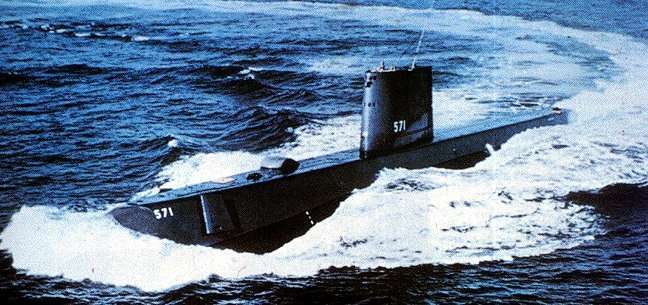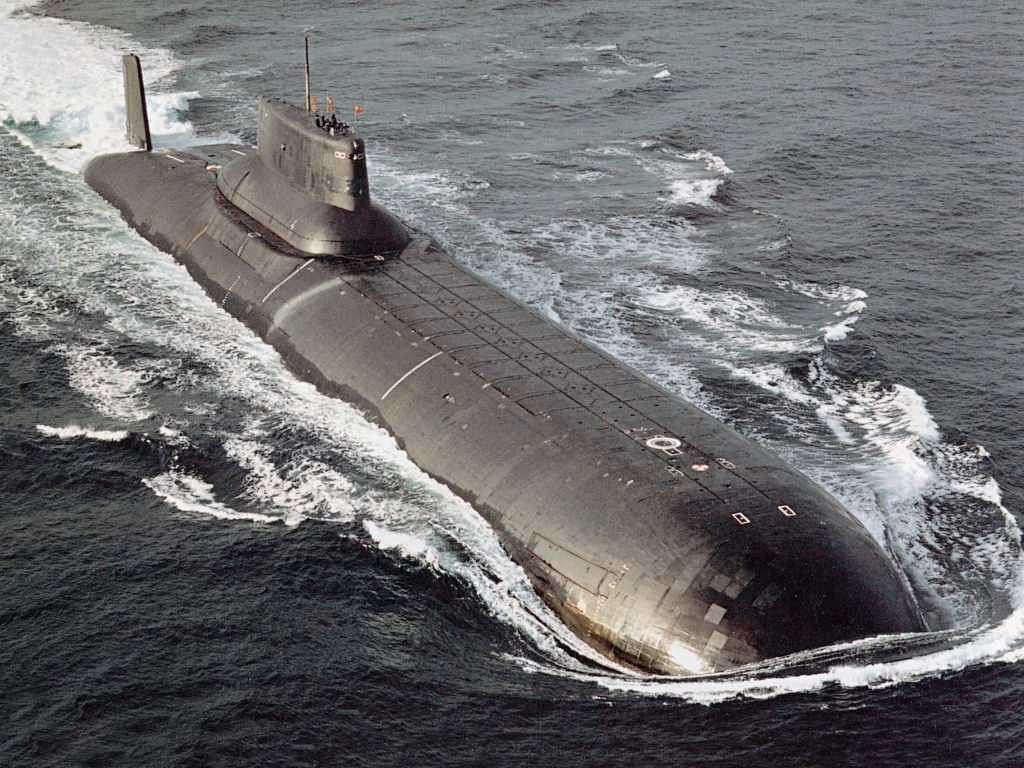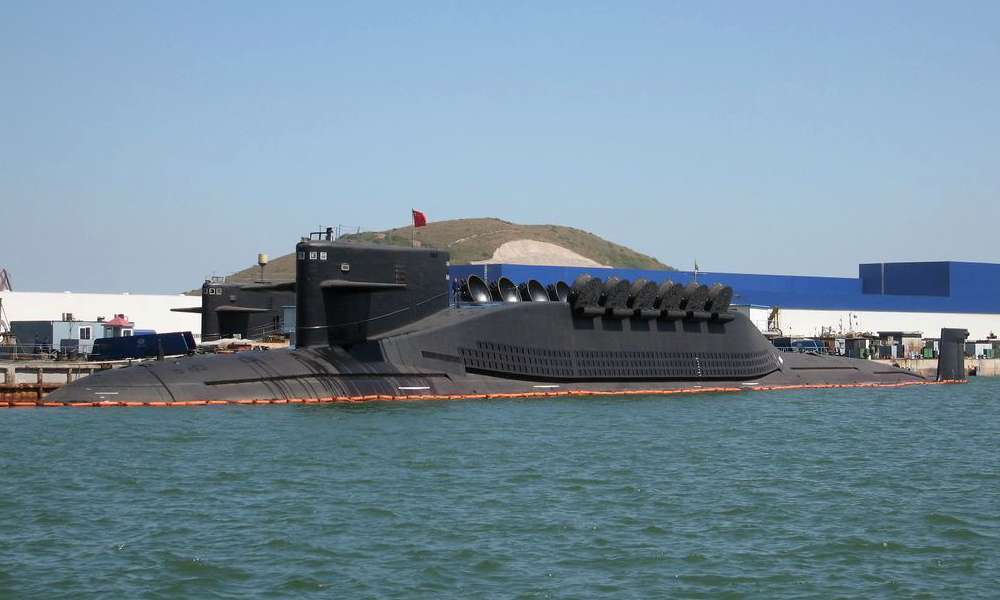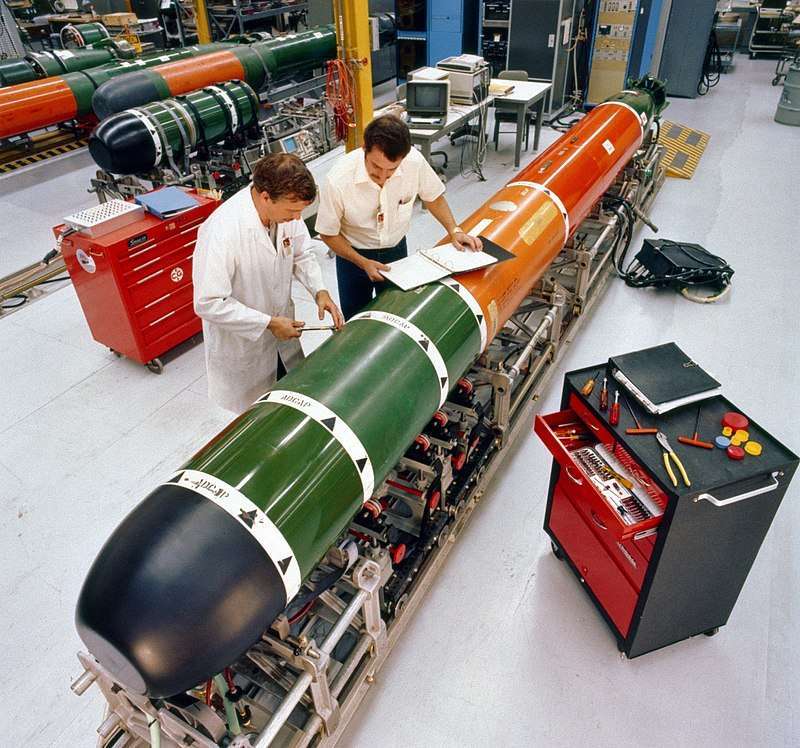Nuclear submarines have revolutionised naval warfare, offering unmatched capabilities in terms of endurance, stealth, and firepower.
These technological marvels have played a crucial role in shaping the global geopolitical landscape.
Here we explore the journey of nuclear submarine design, from its conceptualisation to its deployment, while also examining the notable submarines operated by Russia, America, Britain, Japan, and China.
Furthermore, we delve into the armaments carried by these submarines, highlighting their significance in maintaining naval supremacy.
Early Development
The concept of nuclear-powered submarines emerged during the Cold War as a response to the need for extended operational range and endurance.
The propulsion system of a nuclear submarine relies on a nuclear reactor, providing it with an almost limitless power source.
 The USS Nautilus was the world’s first nuclear powered submarine.
The USS Nautilus was the world’s first nuclear powered submarine.
The first significant development in this field occurred in the 1950s when the United States and the Soviet Union independently embarked on projects to create nuclear-powered submarines.
The United States launched the world’s first nuclear-powered submarine, the USS Nautilus (SSN-571), in 1954.
This historic achievement marked a turning point in naval warfare, as the Nautilus could remain submerged for extended periods without surfacing for air or refuelling.
It set numerous endurance records and proved the viability of nuclear propulsion for submarines.
The Nautilus served as a blueprint for subsequent submarine designs and laid the foundation for the future of nuclear submarine development.
In response to the American development, the Soviet Union launched the K-3 Leninsky Komsomol in 1957.
Although it was not a fully operational submarine, it demonstrated the Soviet commitment to nuclear submarine development.
This led to the construction of the November-class submarines, which were the Soviet Union’s first operational nuclear-powered submarines.
Nuclear Submarines in Operation
Most of the leading seafaring nations have or have had nuclear submarines. Here we take a look at who’s got what.
Russia
Russia, as the successor to the Soviet Union, possesses a formidable fleet of nuclear-powered submarines. Notable among them are the Typhoon-class submarines, which are the largest and most heavily armed submarines ever built.
 The Soviet submarine TK-17 Typhoon class on operations. A true beast of the oceans.
The Soviet submarine TK-17 Typhoon class on operations. A true beast of the oceans.
These submarines were designed to carry ballistic missiles and have since been modified for other purposes, including reconnaissance and special operations.
The Akula-class and Borei-class submarines are also integral to Russia’s naval capabilities.
The Akula-class submarines are known for their advanced sonar systems and are used for both anti-submarine warfare and strategic deterrence.
The Borei-class submarines, on the other hand, are the latest addition to Russia’s fleet and serve as strategic missile carriers.
United States
The United States operates a diverse fleet of nuclear submarines, showcasing their commitment to maintaining naval superiority.
The Ohio-class ballistic missile submarines (SSBNs) form the backbone of the U.S. strategic nuclear deterrence.
These submarines are armed with Trident II D5 ballistic missiles, capable of delivering nuclear warheads with unparalleled precision.
The Virginia-class attack submarines (SSNs) are known for their advanced stealth capabilities, endurance, and versatility.
These submarines excel in a range of missions, including anti-submarine warfare, intelligence gathering, and precision strike capabilities.
Additionally, the Seawolf-class submarines, although limited in number, represent the pinnacle of American submarine technology, featuring enhanced stealth characteristics and formidable armaments.
Britain
The Royal Navy of the United Kingdom operates the Vanguard-class submarines, which form the country’s strategic nuclear deterrent.
These submarines carry Trident II D5 missiles, ensuring that Britain possesses an independent nuclear deterrent capability.
The Astute-class submarines, renowned for their stealth and versatility, serve as the backbone of the British submarine fleet.
 The Royal Navy’s Astute class submarine HMS Ambush
The Royal Navy’s Astute class submarine HMS Ambush
These submarines excel in anti-submarine warfare and can engage targets on land and at sea with their Tomahawk Land-Attack Missiles (TLAMs).
Japan
As a result of its pacifist constitution, Japan does not possess its own nuclear-powered submarines.
However, it has acquired highly advanced conventional submarines that incorporate cutting-edge technology and enhanced stealth capabilities.
The Sōryū-class submarines, operated by the Japan Maritime Self-Defence Force (JMSDF), are among the most advanced diesel-electric submarines in the world.
These submarines are equipped with advanced sonar systems, air-independent propulsion, and long-range capabilities, making them formidable assets in the region.
China
China has made significant strides in developing its nuclear submarine fleet, showcasing its growing naval power and regional influence.
The country operates various classes of nuclear submarines, including the Jin-class submarines.
 A Chinese Jin-class submarine. Never far behind the Russians with their designs.
A Chinese Jin-class submarine. Never far behind the Russians with their designs.
These submarines serve as China’s strategic ballistic missile submarines, armed with JL-2 submarine-launched ballistic missiles (SLBMs).
With an extended range and the capability to carry multiple warheads, the Jin-class submarines enhance China’s nuclear deterrent capabilities.
Additionally, China operates the Type 093 and Type 095 submarines, which serve as attack submarines.
These submarines are equipped with torpedoes, anti-ship missiles, and land-attack cruise missiles, enabling China to project power in the maritime domain.
Nuclear Submarine Armaments
Nuclear-powered submarines are not only distinguished by their propulsion systems but also by their potent armaments. The specific armament configurations vary based on the submarine’s purpose, whether it serves as a ballistic missile submarine or an attack submarine.
Here are some key armaments:
Ballistic Missile Submarines:
Submarine-Launched Ballistic Missiles (SLBMs):
These missiles provide the ability to launch nuclear and conventional warheads from a submerged position, making them a crucial component of a nation’s nuclear deterrent.
Examples include the Trident II D5 missiles carried by Ohio-class submarines in the United States and the JL-2 missiles carried by China’s Jin-class submarines.
Attack Submarines:
Torpedoes:
These underwater missiles are used for anti-submarine warfare and can be launched from torpedo tubes. They are capable of engaging enemy submarines, surface vessels, or even coastal targets.
 Even the state of the art Mark 48 torpedo needs maintaining.
Even the state of the art Mark 48 torpedo needs maintaining.
Advanced torpedoes, such as the U.S. Mark 48 torpedo and the Russian VA-111 Shkval, possess high speeds and sophisticated guidance systems for enhanced effectiveness.
Anti-Ship Missiles:
Some attack submarines are equipped with anti-ship missiles, allowing them to engage surface vessels.
These missiles provide submarines with the ability to strike enemy ships from a concealed position.
Examples include the U.S. Harpoon missile and the Russian Kalibr missile.
Land-Attack Cruise Missiles: Attack submarines may also carry land-attack cruise missiles, enabling them to strike targets on land. These missiles provide submarines with the capability to conduct precision strikes against enemy installations or strategic targets.
 Tomahawk Block IV cruise missile. No target is safe. Even from a sub.
Tomahawk Block IV cruise missile. No target is safe. Even from a sub.
Notable examples are the U.S. Tomahawk Land-Attack Missiles (TLAM) and the Russian Kalibr missiles.
Conclusion
Nuclear submarines represent the epitome of naval engineering and technological advancements.
From their inception in the Cold War era to their current operational deployments, these vessels have redefined naval warfare capabilities.
Russia, the United States, Britain, Japan, and China all operate advanced nuclear-powered submarines, each tailored to meet specific strategic requirements.
The armaments carried by these submarines, including ballistic missiles, torpedoes, anti-ship missiles, and land-attack cruise missiles, provide them with immense firepower and the ability to project force across land and sea.
As technology continues to evolve, nuclear submarines will remain vital assets in ensuring maritime dominance and global security.